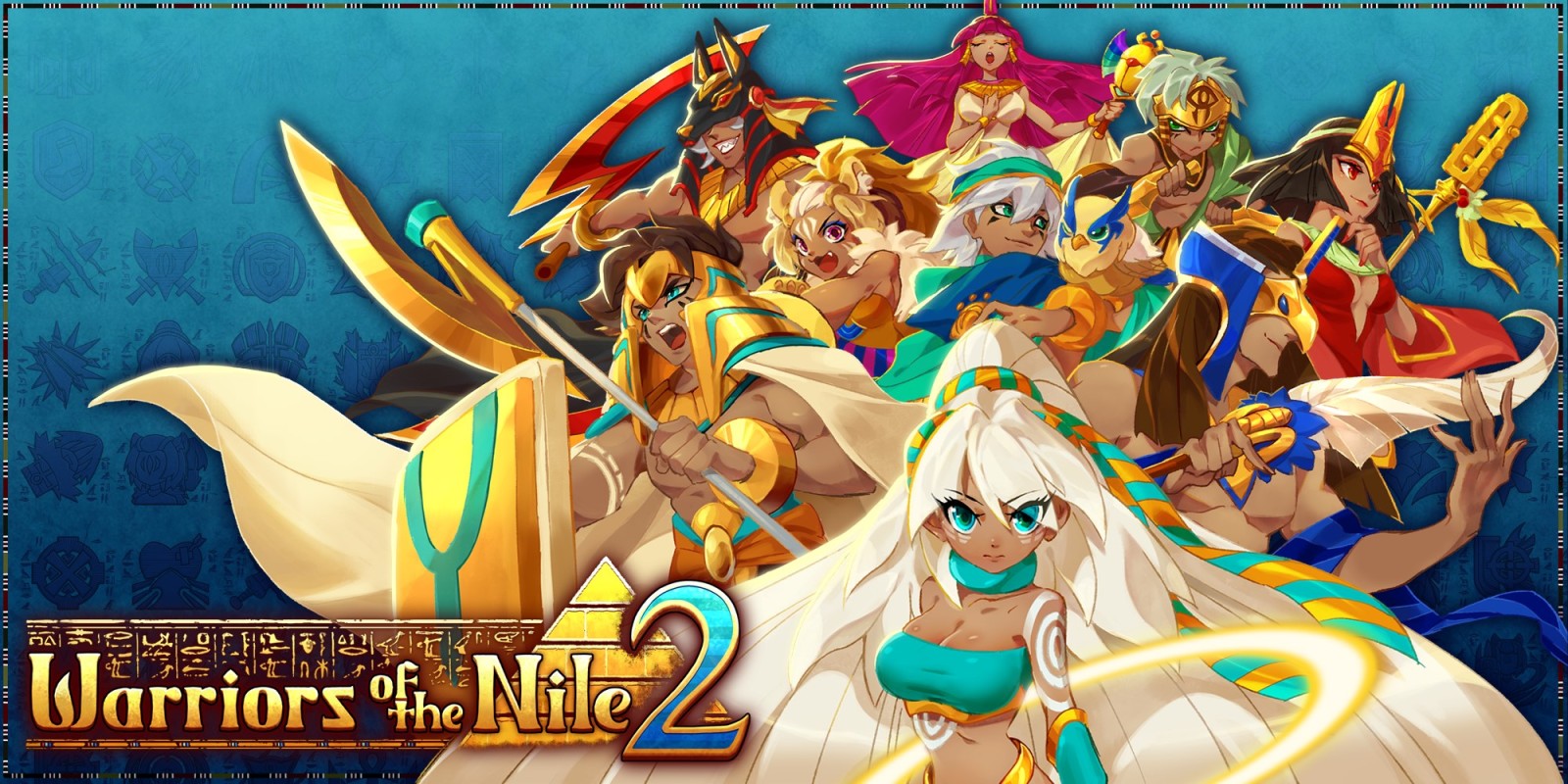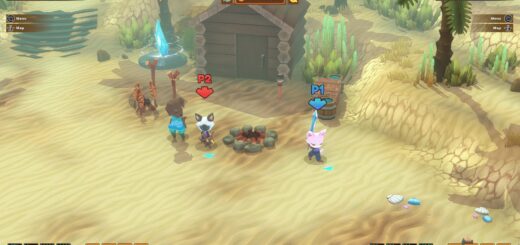Warriors of the Nile 2 Review
Brawl Like An Egyptian
In the annals of role-playing video games, certain settings often feature more prominently than others. While Egyptian-themed areas aren’t uncommon as a part of a larger whole, having an entire game built around such a setting is considerably rarer. So when I found Warriors of the Nile 2 available at a serious Black Friday discount on the Nintendo eShop, I was intrigued enough to purchase it.
The opening animation conveys the gist of what’s going on. The Egyptian pantheon has fallen, banished by the invading forces of the Roman Empire and the Olympians. Rebels of all stripes rage across the wastelands, and the legion holds the capital. It’s a good hook, with a lot of potential. It is a shame then that the game has exactly zero plot or narrative in its main body. No events or dialogue exist between battles or chapters, the characters are better described as archetypes without personality, and the only text to be seen is contained within the explanatory windows of skills and equipment. The “positive” side of this is that the dearth of large text segments helps to hide the dubious quality of the game’s translation and localization.
That leaves the combat, and this is where Warriors of the Nile 2 shines like a pharaoh’s jewel. This game utilizes a combination of tactical combat and roguelike strategizing. At the outset of each chapter, the sequence of encounters is determined; some appear every time while others vary between playthroughs. Whenever there is more than one encounter available, the player chooses which to pursue. Battles are quick and decisive affairs, pitting three heroes against a range of foes, from desert scorpions and lizards to rebels and legionnaires, all the way to the servants of the gods themselves. A standard run of the game consists of three chapters and takes an hour to an hour and a half to complete on average. An extended run includes the fourth chapter, unlocked after beating the game once, and there’s also a super-powerful true final boss to challenge.
The player’s party will always consist of three roles: Fighter, Hunter, and Mage. The game tutorial starts by introducing one archetype for each role, but six more are unlocked through the base-building segment of the game, while the last trio only appear once the player has unlocked and beaten the game’s fourth chapter. On top of this, the first nine archetypes also have alternative forms made available after beating a regular three-chapter run of the game once, and while they have the same general play style as the main versions, they also have their own quirks.
It’s important to note that the twelve archetypes have widely varying game mechanics. The starter Scythe Wielder fighter archetype is a damage-soaking tank, while the Tomb Warrior fighter focuses on attack, dealing multiple hits in a round, and the Lion Brawler leaps the distance to smash her foes. For ranged roles, the Halo Hunter fires arrows within a range, while the Eagle Handler strikes straight at a distance, and the Dune Assassin specializes in hit-and-run tactics. On the magic side, the Star Acolyte calls down a varying number of meteors, but the Scorpid Priestess sets fiery runes to trap enemies, and the Saint of Dawn can summon an army of adorable beetle-buddy comrades to attack on her behalf. The three top-tier archetypes — Sun Warrior, Dune Hunter, and Light Mage — combine elements of earlier warriors to wreak even more havoc. No matter which combination of warriors one chooses for a run through the game, it’s going to be an interesting fight.
Combat encounters provide one or two rewards for regular battles, or all the rewards for elite battles. Besides the usual money, equipment, or special coins to be had, the player may also have a choice of skill tablets from which to select one to aid in their endeavor. These tablets are randomized for availability, and the effects start piling up as the player progresses through the game. There are some strange synergies possible with enough tablets and equipment on a single hero, and by the end of the third chapter, one or more are likely to be demigod-tier powerhouses who can reasonably destroy the avatars of the divine. In keeping with the roguelike nature of the choices, they’re not even necessarily the same synergies for each hero on consecutive runs.
The graphics are bright and colorful, with the themes reflecting the aesthetics of Egyptian iconography through the lens of modern anime styles. The heroic archetypes and their variants are all visually distinct, as are the enemies, which range from angry scorpions to the divine avatars of about half the Roman Olympiad. While the music for this game doesn’t stretch the medium in any way, it provides an enjoyable backdrop for an experience that was intended to be played on the go and in short bursts.
Warriors of the Nile 2 is a game built for challenging the battle system. The ways one can break the combat builds are myriad, and a record is kept of every time through, with times, skills, and other stats all kept for posterity. Like any good roguelike, the journey is as important as the destination, and far more relevant to the plot. This is just a fun game to mess around with on occasion, regardless of the lack of story. This doesn’t keep me from wishing there was a story to care about, however. If this studio ever decides to produce a third game of the series with a plot, I would happily game like an Egyptian once again.


Fast-paced small squad tactical combat
Beautiful Egyptian aesthetic
Encourages skill synergies to break the battle system
No plot of which to speak
Needs more gods to beat up









Recent Comments